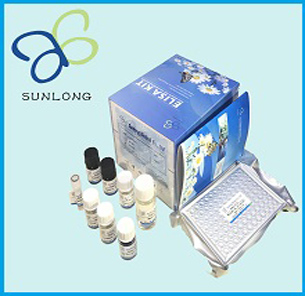Human salmonella typhi antibody IgG (ST-IgG) ELISA Kit
Catalog No :
CAS Number :
Brand :
In Stock
Method: Sandwich
Sample Volume: 50ul
Wavelength: 450nm
Qualitative: Negative/Positive
Specifications:
| Application | ELISA-Based Assays |
| Storage Temperature | 2-8°C |
| Product Type | Elisa Kit |
| Product Grade | Molecular Biology |
The Human Salmonella Typhi Antibody IgG (ST-IgG) ELISA Kit is a sensitive and specific assay designed for the detection of Salmonella Typhi IgG antibodies in human serum, plasma, culture media, and other biological fluids. This kit is essential for research into Salmonella infections, immune responses, and serological studies.
Purpose
- Detection of ST-IgG Levels:
- Identify and measure Salmonella Typhi IgG antibody concentrations in human biological samples to study immune responses and infection prevalence.
- Sample Compatibility:
- Suitable for serum, plasma, culture media, and other biological fluids.
Principle
The assay utilizes a Sandwich-ELISA technique to detect and quantify ST-IgG antibodies accurately. The process includes:
- Pre-Coated Plate:
- Microelisa stripplate wells are pre-coated with an antigen specific to Salmonella Typhi IgG.
- Sample and Standard Addition:
- Standards and samples are added to the wells, where ST-IgG in the sample binds to the immobilized antigen.
- HRP-Conjugated Detection:
- A Horseradish Peroxidase (HRP)-conjugated antigen specific to Salmonella Typhi is added, forming a complex.
- Washing Step:
- Free and unbound components are washed away to minimize background interference.
- Substrate Reaction:
- TMB substrate solution reacts with HRP, producing a blue color in wells containing ST-IgG.
- Stop Reaction and Measurement:
- A stop solution is added, changing the color from blue to yellow. Optical density (OD) is measured at 450 nm using a spectrophotometer.
- Result Interpretation:
- The presence of ST-IgG antibodies is determined by comparing OD values to the CUTOFF value.
Key Features
- High Sensitivity and Specificity:
- Detects Salmonella Typhi IgG antibodies with minimal cross-reactivity or interference.
- Wide Sample Compatibility:
- Validated for serum, plasma, culture media, and other biological fluids.
- Accurate Results:
- Allows precise determination of ST-IgG antibody presence using a cutoff value.
- Ease of Use:
- Pre-coated plates and ready-to-use reagents simplify assay execution.
- Reproducibility:
- Ensures consistent and reliable results across multiple experiments.
Kit Components
- Pre-coated Microelisa stripplate.
- HRP-conjugated Salmonella Typhi antigen.
- TMB substrate solution.
- Stop solution.
- Wash buffer.
- Sample diluent.
- Instruction manual.
Applications
- Infectious Disease Research:
- Study immune responses to Salmonella Typhi infections.
- Serological Studies:
- Investigate Salmonella Typhi IgG prevalence in populations.
- Epidemiological Research:
- Monitor outbreaks and spread of Salmonella infections.
- Clinical Diagnostics Research:
- Assess Salmonella Typhi IgG levels in acute or past infections.
- Vaccine Development:
- Evaluate antibody responses to Salmonella Typhi vaccines.
Advantages
- High Accuracy:
- Provides precise detection of Salmonella Typhi IgG antibodies.
- Convenience:
- Includes ready-to-use reagents for streamlined workflows.
- Versatility:
- Compatible with various biological sample types.
- Reliable:
- Delivers consistent and reproducible results.
Assay Protocol Summary
- Add standards or samples to the pre-coated wells.
- Incubate with HRP-conjugated Salmonella Typhi antigen.
- Wash to remove unbound components.
- Add TMB substrate to develop color.
- Stop the reaction and measure OD at 450 nm.
- Determine ST-IgG presence by comparing OD values to the cutoff.
Storage and Stability
- Store all kit components at 2–8°C to maintain reagent integrity.
- Avoid repeated freeze-thaw cycles to ensure assay reliability.
The Human Salmonella Typhi Antibody IgG (ST-IgG) ELISA Kit is an essential tool for researchers studying immune responses to Salmonella infections, monitoring outbreaks, and evaluating vaccine efficacy. Its precision, ease of use, and compatibility with various sample types make it indispensable for clinical and experimental applications.




 0
0
